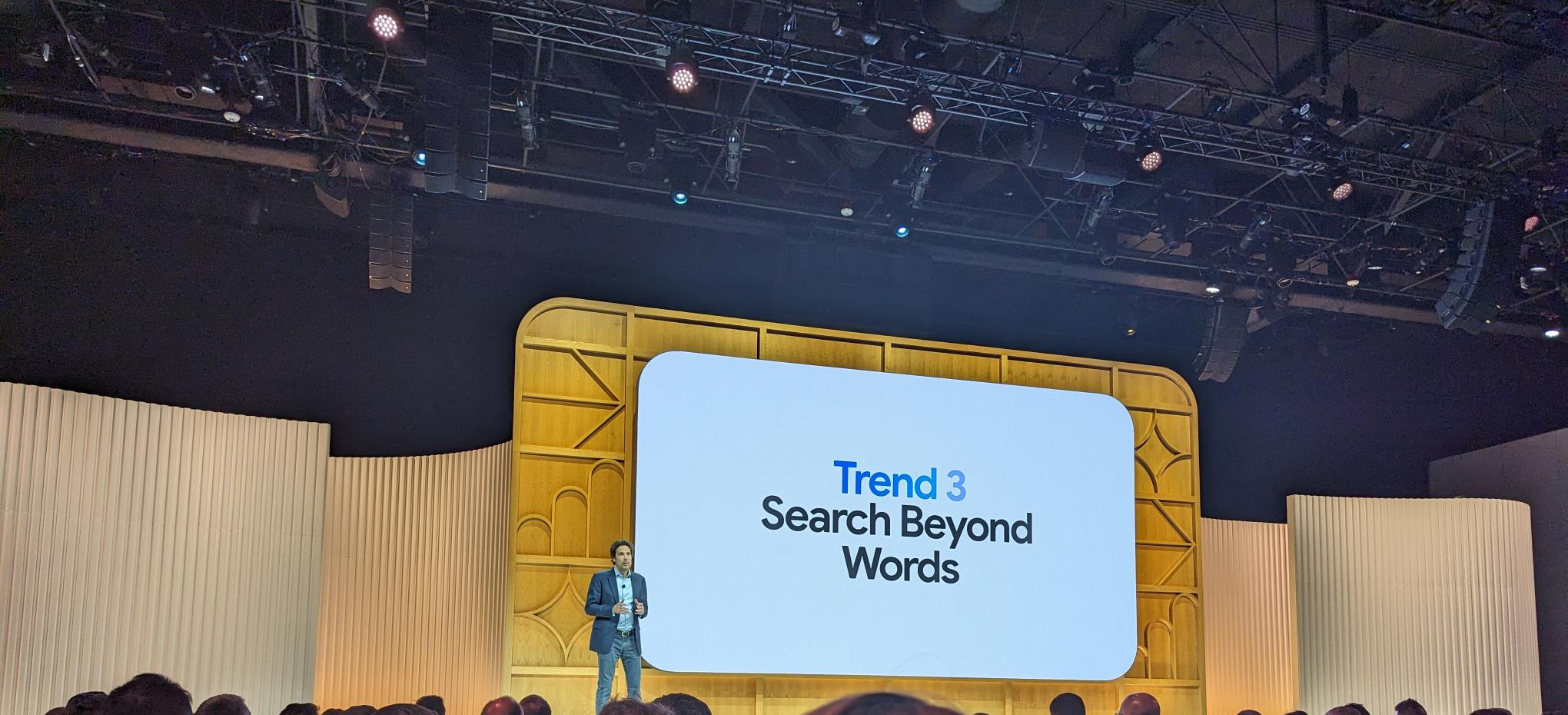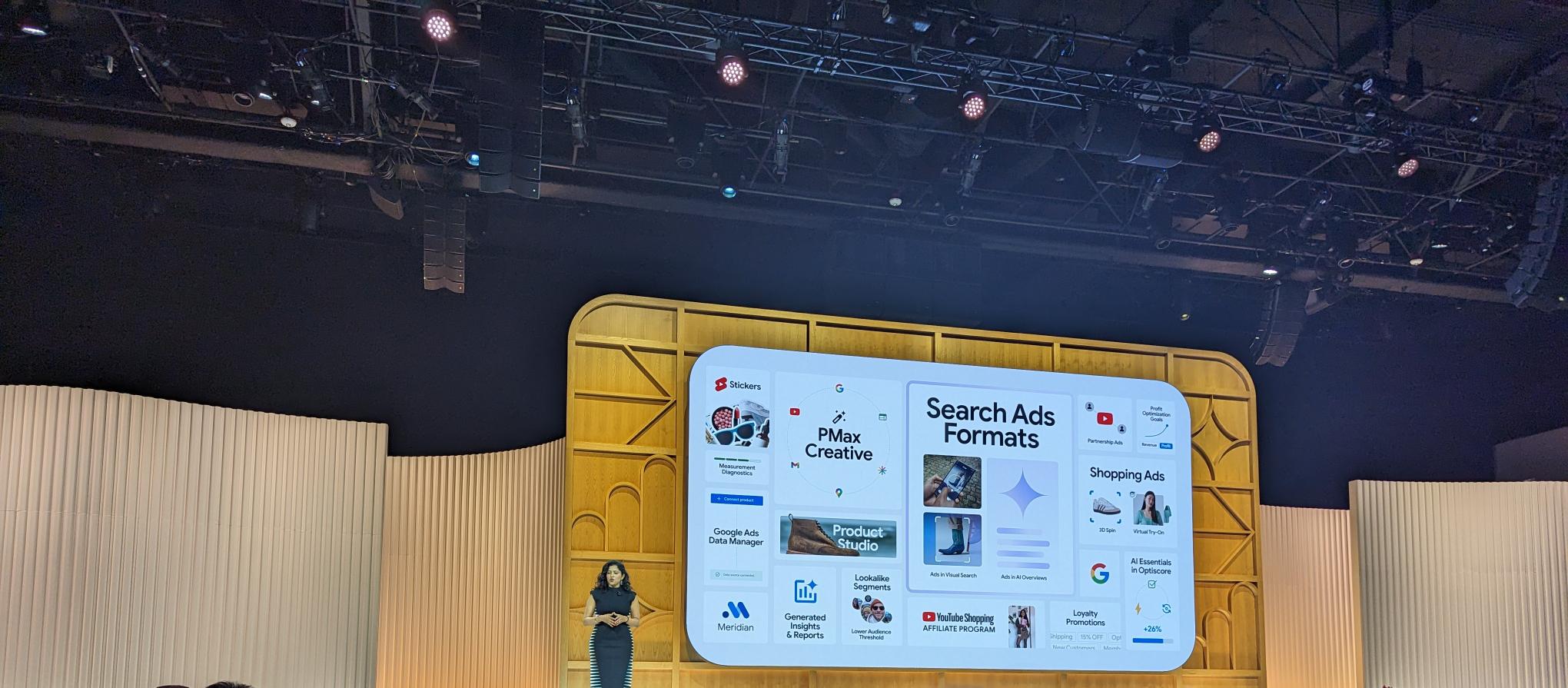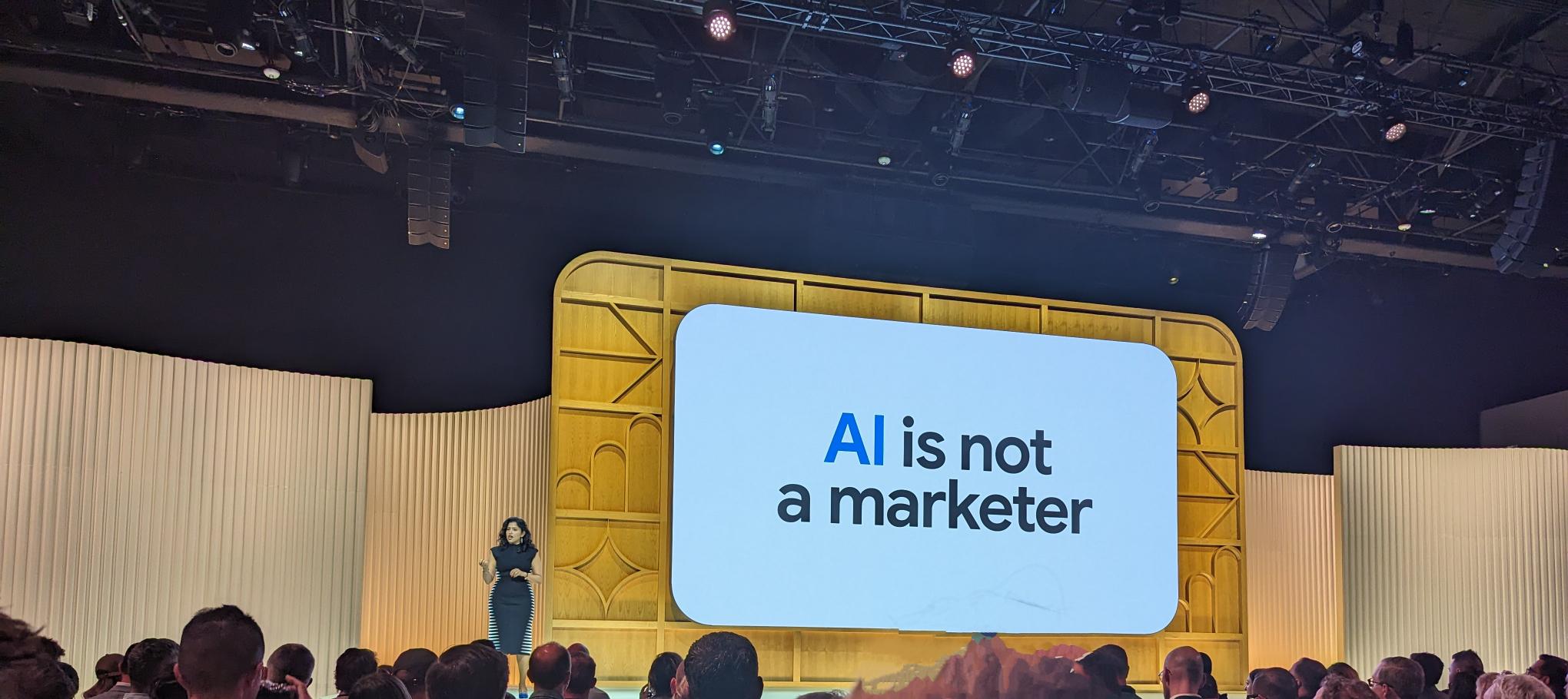
Google Marketing Live 2024: Key Highlights and Insights for Advertisers

Discover the latest updates from Google Marketing Live as SEJ contributor Brooke Osmundson highlights key product enhancements in Google Ads, focusing on creatives, media strategies, and advanced measurement tools.
After a decade of tuning in to Google Marketing Live online, I finally got the chance to experience the event in person this year.
For those who may not know, Google Marketing Live is a yearly event hosted by Google where they unveil their big product updates for advertisers.
This year, Google unveiled 30 product updates for Google Ads! While not all of them were mentioned during the keynote, there was one core theme of the updates:
AI.
The majority of product updates can be categorized under these main components of Google Ads:
Creatives.
Media.
Measurement.
Now that the event has ended, I've had a chance to think about how these platform announcements can be useful for advertisers or what they mean for marketing in general.
Here are the top product updates I'm excited about for 2024.
AI Creative Announcements
As expected, Google announced multiple updates specifically around ad creatives and functionality for advertisers. These include:
AI-powered image editing allows advertisers to easily edit images, including product feeds. AI-generated images will be used in recommendations for Performance Max campaigns, enabling advertisers to add or remove objects, extend backgrounds, and adjust sizes to fit various dimensions and ratios.
In addition, advertisers can now set new brand standard guidelines by providing Google AI with brand colors, fonts, and guidelines. They can also upload example images as a reference point for the generative AI to follow.
Animated image ads are available for Demand Gen campaigns. If you have a Merchant Center account, you can display animated image ads on YouTube Shorts and video ads. These animated images will be created automatically from your product feed images.
Google has formed partnerships with creative platforms like Canva, Smartly, and Pencil Pro for integration into the Google Ads asset library. This allows you to design assets on these platforms and easily export them to Google Ads.
As far as timing goes, not everything announced is available right away.
According to Google, the new brand standard guidelines will be rolled out in the later months.
AI Media Announcements
During the live keynote, one of the most livening parts was Philipp Schindler’s demo with its generative AI technology.
It sparked imagination around non-traditional ways to search and interact to find new information.
Google Marketing Live trend: Search Beyond Words.
Photo taken by author, May 2024
With that comes some new ad space available for advertisers.
Google Ads has introduced new opportunities for advertisers to reach customers through visual search results. One of the key updates is the inclusion of Shopping ads in Google Lens and Circle to Search. This means that your products can now be showcased when they are relevant to the photos and screenshots that users search with. It's a new ad space and experience that can help increase visibility and engagement for your shopping ads.
Search and Shopping ads now have the opportunity to appear in AI Overviews, with a new placement unlocked in the United States. Ads from existing AI-powered Search and Performance Max campaigns can be shown in the AI Overview "Sponsored" section if they are relevant to both the user search and the output from AI Overview.
Google also introduced conversational campaign creation, which was announced last year. Recent data shows that SMBs who use this tool are 63% more likely to publish search campaigns with 'Good' or 'Excellent' ad strength.
Advertisers using Performance Max and Standard Shopping campaigns can now customize loyalty promotions such as special pricing or exclusive offers for members. Just like the creative announcements, not all of these promotions will be active right away.
Shopping ads and loyalty promotions will be introduced in visual search results in the coming months. Google is testing this new ad placement in the United States to improve the overall user experience based on feedback and data from AI Overviews.
AI Measurement Announcements
While I thought there would be more hype around measurement improvements, there was only one brief callout about more in-depth reporting on Performance Max campaigns.
In the coming months, Performance Max will introduce asset-level reporting. This means that advertisers will soon have the ability to view conversion metrics for each creative asset. This is a significant improvement as advertisers previously did not have the option to report at such a detailed level.
Get ready for more personalized recommendations and insights in Merchant Center Next! You can look forward to conversational reporting requests and quicker access to visual insights tailored just for you.
Exciting news for app advertisers! With new audience signals in App campaigns, you can now connect various audience lists, including your own first-party data audiences. Google AI will use this information to display ads to users who are more likely to make a purchase.
Introducing the New Measurement Diagnostics hub! Advertisers can now easily validate and troubleshoot any measurement setup within Google Ads. In addition, you'll be able to see your measurement durability and readiness in this hub, which is essential for building and activating first-party data audiences.
Google has recently unveiled its latest open-source Marketing Mix Model (MMM) called Meridian. This tool is designed to help you measure the impact of your entire marketing strategy and empower you to make informed decisions for your campaigns.
What This Means For Advertisers:
Advertisers can now benefit from improved iOS measurement with the latest SKAdNetwork enhancements. With new reporting updates accessible through the Google Ads API and third-party app attribution partners, advertisers can take advantage of a new beta feature that allows for the integration of SKAdNetwork conversion value schema into Google Ads. This enhancement is particularly useful for iOS app campaigns utilizing tCPA or tROAS bidding strategies, helping to optimize performance and drive better results.
During the brief hour and 15-minute keynote, we learned about a range of exciting new updates. These updates will impact various campaign types and some are already accessible while others will be rolled out in the coming months.
A visual recap of the products announced at Google Marketing Live 2024.
Photo taken by author, May 2024
So, with these updates, is there a larger theme at play?
In the grand scheme of the Google Marketing Live updates, a few major themes stood out to me.
1. Video content is key.
A lot of updates from Google Marketing Live revolved around content creation, automation, and animation.
Essentially, Google seems “all-in” on video content—specifically YouTube Shorts.
If you don’t use video in your marketing, you might not keep up with competitors and get less engagement. Some advertisers avoid video because they think it's hard, complicated, or need too many resources.
Now, thanks to Google's updates, you can easily create video content using just your phone. Google's tools even allow you to transform images into engaging videos.
By integrating video into your Google Ads strategy, you can effectively engage with your desired audience and make a stronger connection with them.
2. AI strategies are a must-have.
During the keynote, Google said, “AI is not a marketer.”
Google Marketing Live AI is not a marketer.
Photo taken by author, May 2024.
Basically, your jobs are safe right now, advertisers.
So, while AI is not a marketer, we marketers must have an AI strategy to keep up with these changes.
Trying to outsmart the Google Ads system or holding on to too much control can hinder the growth and scalability of your campaigns.
To ensure a successful AI strategy, consider these key points:
Always ensure the goal and measurement setup is correct.
Set realistic bidding strategies so Google can learn from these inputs.
Send appropriate signals to Google within your campaign setup.
AI outputs are typically only as good as the inputs it gets. That’s where you, the marketer, come in.
When utilized effectively, these new AI tools can assist in increasing your productivity, accelerating your learning, and enabling quicker decision-making to enhance your campaigns.
For a detailed summary of the latest Google Ads product updates, you can refer to the official article published by Google.
Featured Image: Veroniksha/Shutterstock
Editor's P/S:
Google Marketing Live 2024 unveiled a plethora of AI-powered updates for Google Ads, signaling a shift towards automation and data-driven decision-making. The focus on visual content and video creation empowers advertisers to engage audiences effectively. AI strategies become crucial as Google emphasizes the importance of providing accurate inputs and leveraging AI's capabilities to enhance campaign performance.
The integration of AI into Google Ads streamlines tasks, automates creative processes, and provides deeper insights into campaign performance. Advertisers can now leverage AI to optimize their campaigns, improve measurement, and enhance their overall marketing strategies. This shift towards AI-driven marketing necessitates a proactive approach, with marketers embracing AI tools and developing strategies that align with Google's AI roadmap.










